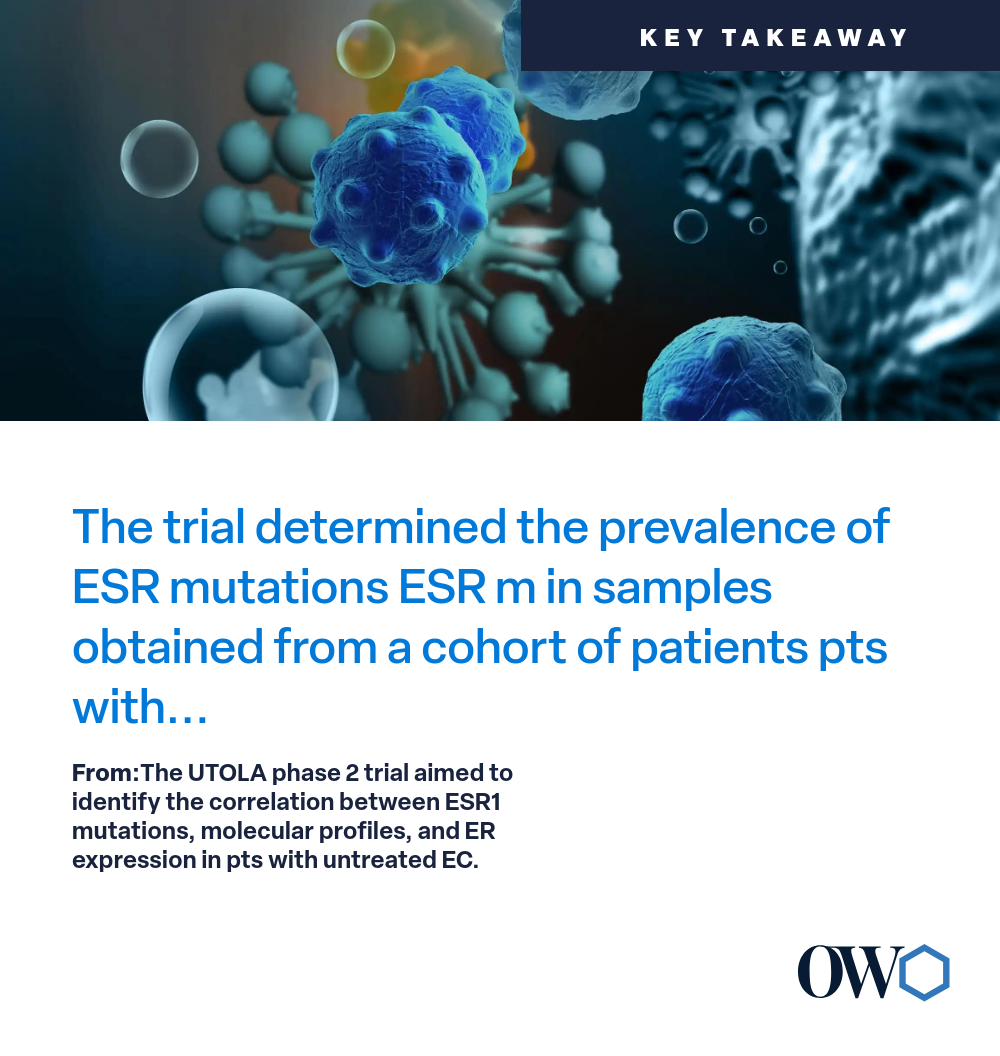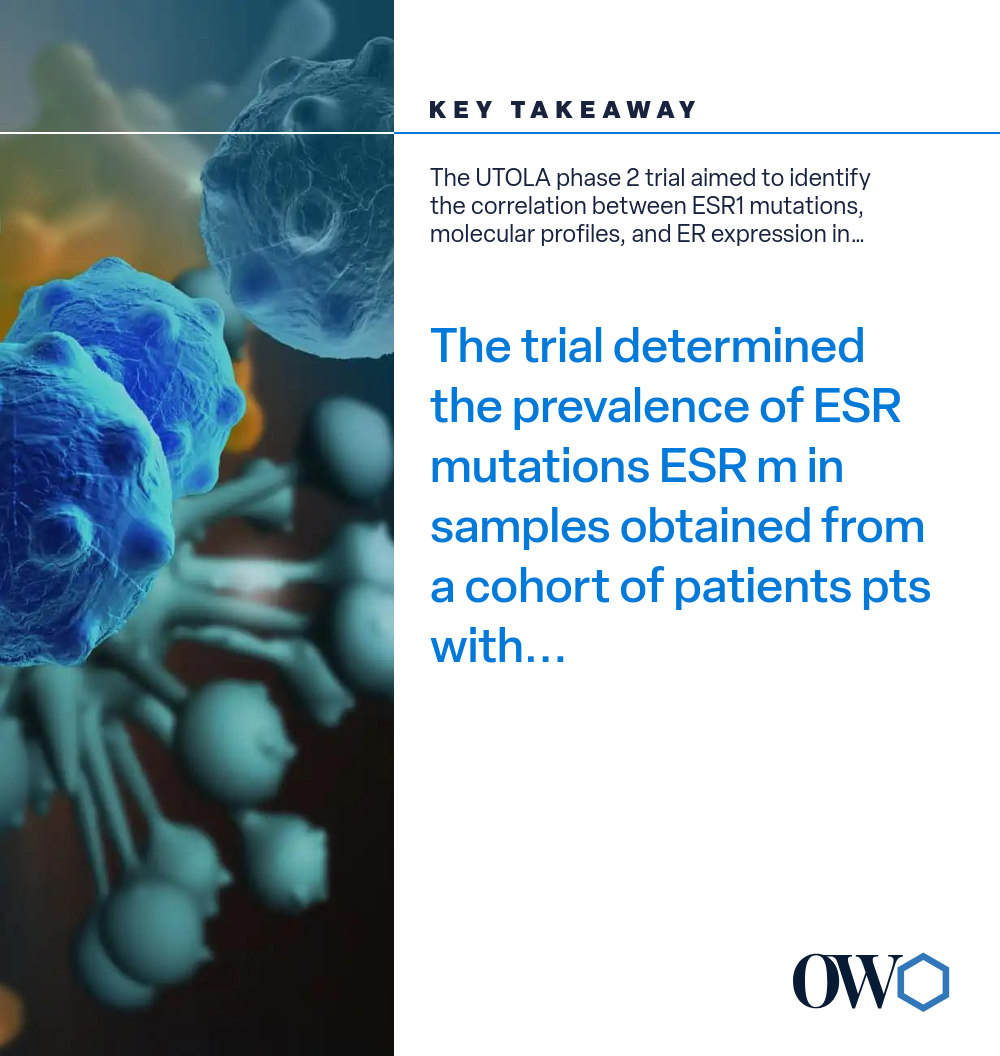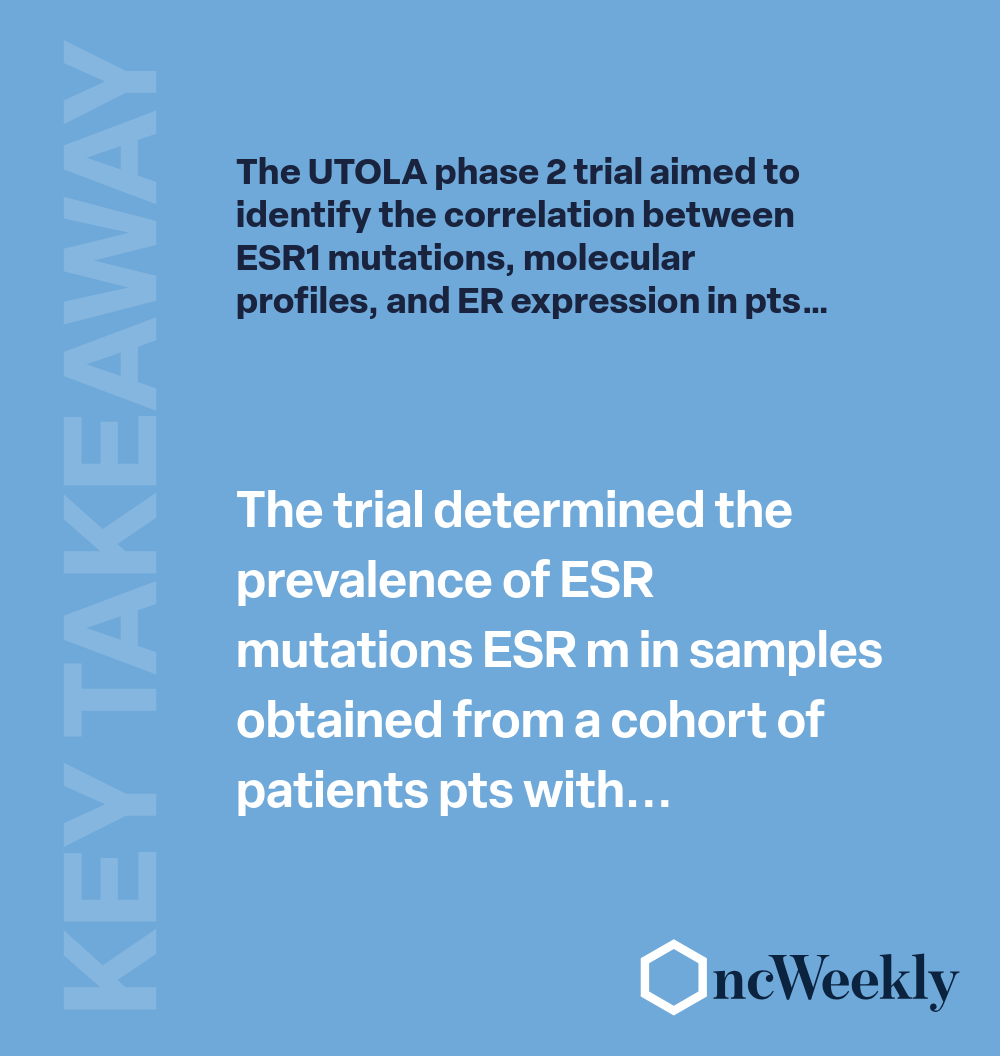KEY TAKEAWAYS
- The UTOLA phase 2 trial aimed to identify the correlation between ESR1 mutations, molecular profiles, and ER expression in pts with untreated EC.
- The ESR1 mutations in LBD were found to be prevalent in relapsed/metastatic low-grade NSMP EC.
The trial determined the prevalence of ESR1 mutations (ESR1m) in samples obtained from a cohort of patients (pts) with previously untreated endometrial cancer (EC) samples and attempted to establish a correlation between the presence of mutations with the molecular profiles, expression of estrogen receptor (ER), and clinical outcomes.
Aromatase inhibitors (AIs) are considered a therapeutic alternative for ER+ EC, particularly in cases of low-grade EC. ESR1 somatic mutations can lead to constitutive ligand-independent activation of ER and have been associated with resistance to AIs in breast cancer (BC). While these mutations are rare at the time of BC diagnosis (<1%), they occur in up to 36% of cases that develop resistance to AIs.
Felix Blanc-Durand and the team designed this trial to correlate the prevalence of ESR1 mutations (ESR1m) with the molecular profiles, ER expression, and clinical outcomes.
Felix Blanc-Durand and the team designed this trial to correlate the prevalence of ESR1 mutations (ESR1m) with the molecular profiles, ER expression, and clinical outcomes.
About 147 pts with relapsed/metastatic EC who had achieved disease control after first-line platinum chemotherapy (chemo) were enrolled in the trial. Archival EC formalin-fixed, paraffin-embedded (FFPE) tumor tissues were analyzed using a comprehensive sequencing panel covering 127 genes, including ESR1. Only previously reported hotspot mutations in the ligand-binding domain (LBD) were considered for the analysis. As per the PROMISE classification tumors were categorized as POLE, MMRd, TP53mut, or NSM.
Results revealed that of 147 pts, 137 (93%) had sufficient tumor material for sequencing. Pathogenic ESR1 mutations were identified in eight tumors (6%), including specific mutations Y537S/C/N (n=4), L536H/P (n=2), and E380Q (n=2).
All cases with ESR1 mutations exhibited low-grade endometrioid histology, were ER-positive, and were classified as NSMP. Among the 43 pts with metastatic endometrioid NSMP EC, 19% (8/43) had ESR1 mutations in archival treatment-naive tumor tissue.
In terms of outcomes, overall survival was similar between pts with ESR1-mutant EC and those with ESR1-wild type NSMP EC, with median survival not reached in the ESR1-mutant group compared to 25.3 months in the ESR1-wild type group (P=0.114).
The study concluded that ESR1 mutations in the LBD were commonly seen in relapsed/metastatic low-grade endometrioid NSMP EC; detected in nearly 20% of treatment-naive cases. These mutations suggest AIs, pinpointing the impact of ESR1 status when selecting hormonal therapies and in AI trials.
The trial was sponsored by ARCAGY/ GINECO GROUP.
Source: https://cslide.ctimeetingtech.com/gynae24hybrid/attendee/confcal/show/session/4
Clinical Trial: https://www.clinicaltrials.gov/study/NCT03745950
Durand F B, Nikolaev S, Leman R, et al. (2024). “ESR1 mutation in untreated endometrial cancer: Prevalence, characteristics and prognostic implications from the UTOLA trial.” Presented at ESMO-GC 2024, (Abstract 41MO)










